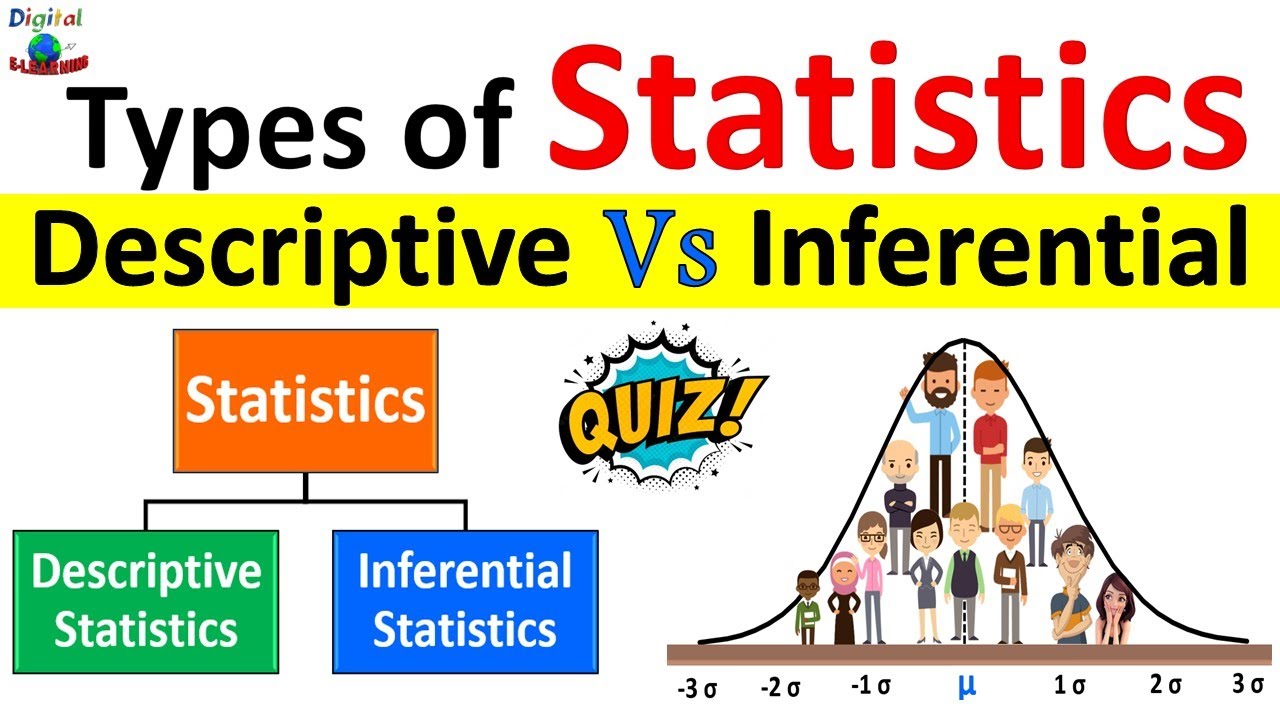Mean Median Mode 3
Summary
TLDRThis video discusses the advantages of the mean in inferential statistics, highlighting its algebraic properties, ability to balance deviations, and minimize squared errors. The mean is presented as a stable estimator of population parameters, outperforming the median and mode in typical distributions. However, the video cautions that the mean's stability diminishes in skewed distributions, where the median may be a better option. By understanding these concepts, viewers can appreciate the mean's role in making accurate statistical estimates and the importance of distribution characteristics in data analysis.
Takeaways
- 😀 The mean is algebraic, allowing for easier integration into complex statistical formulas.
- 📊 The sum of deviations from the mean equals zero, balancing overestimates and underestimates.
- 🔍 The mean serves as an unbiased estimator, making it crucial for inferential statistics.
- 📏 The mean minimizes squared deviations, which is beneficial for reducing statistical error.
- 📈 The mean provides a more stable estimate of the population mean compared to the median and mode.
- ⚖️ Stability of the mean is greatest in symmetric distributions but can decrease in skewed distributions.
- 🔗 The concept of squared error has historical significance and is foundational in statistical methods.
- 👥 When estimating population parameters, the mean generally yields less error than the median or mode.
- 📉 In skewed distributions, the median may be preferred due to the mean's decreased stability.
- 🧠 Understanding the advantages of the mean is essential for making accurate inferential statistical guesses.
Q & A
What is the primary focus of the lecture?
-The lecture focuses on the advantages of the mean in inferential statistics and how it is used to estimate population parameters.
Why is the mean considered algebraic?
-The mean is algebraic because it can be easily incorporated into complex mathematical formulas, allowing for more advanced calculations compared to the median or mode.
What does it mean that the sum of deviations from the mean equals zero?
-It means that when you calculate the difference between each data point and the mean, the positive and negative deviations balance out to zero, indicating that the mean provides a balanced estimate of the data.
How does the mean minimize squared deviations?
-The mean minimizes the sum of squared deviations, meaning that if you square the differences between each data point and the mean, this total will be less than the total of squared differences from any other number.
Why is minimizing squared error important in inferential statistics?
-Minimizing squared error is important because it provides a more accurate estimate of population parameters when using sample data, which is critical for statistical analysis and inference.
What is meant by the stability of the mean?
-Stability refers to the mean's reliability as an estimator; it generally produces less error in estimating the population mean compared to the median or mode, especially in symmetrical distributions.
In what situations might the median be preferred over the mean?
-The median may be preferred when dealing with skewed distributions or outliers, as these factors can decrease the mean's stability and reliability as an estimator.
What were the average errors for the mean, median, and mode in the provided example?
-In the example, the mean had an average error of 0.09 years, the median had an average error of 1 year, and the mode had an average error of 2 years, demonstrating that the mean is the most accurate in this case.
How does the shape of a distribution affect the mean's stability?
-The stability of the mean decreases in skewed distributions; as the distribution becomes more lopsided, the mean can become less reliable compared to the median.
What is the main takeaway from this lecture regarding the use of the mean in statistics?
-The main takeaway is that while the mean has significant advantages for estimating population parameters in inferential statistics, its effectiveness can be compromised in certain distribution shapes, warranting consideration of alternative measures like the median.
Outlines

This section is available to paid users only. Please upgrade to access this part.
Upgrade NowMindmap

This section is available to paid users only. Please upgrade to access this part.
Upgrade NowKeywords

This section is available to paid users only. Please upgrade to access this part.
Upgrade NowHighlights

This section is available to paid users only. Please upgrade to access this part.
Upgrade NowTranscripts

This section is available to paid users only. Please upgrade to access this part.
Upgrade NowBrowse More Related Video

What is Statistics? A Beginner's Guide to Statistics (Data Analytics)!

What is the difference between Descriptive Statistics and Inferential Statistics?

Statistik Inferensial

Descriptive Statistics vs Inferential Statistics | Measure of Central Tendency | Types of Statistics

PERBEDAAN STATISTIKA DESKRIPTIF DAN INFERENSIAL | Dive Deeper | Algoritma 2023

How To Calculate The Standard Deviation
5.0 / 5 (0 votes)